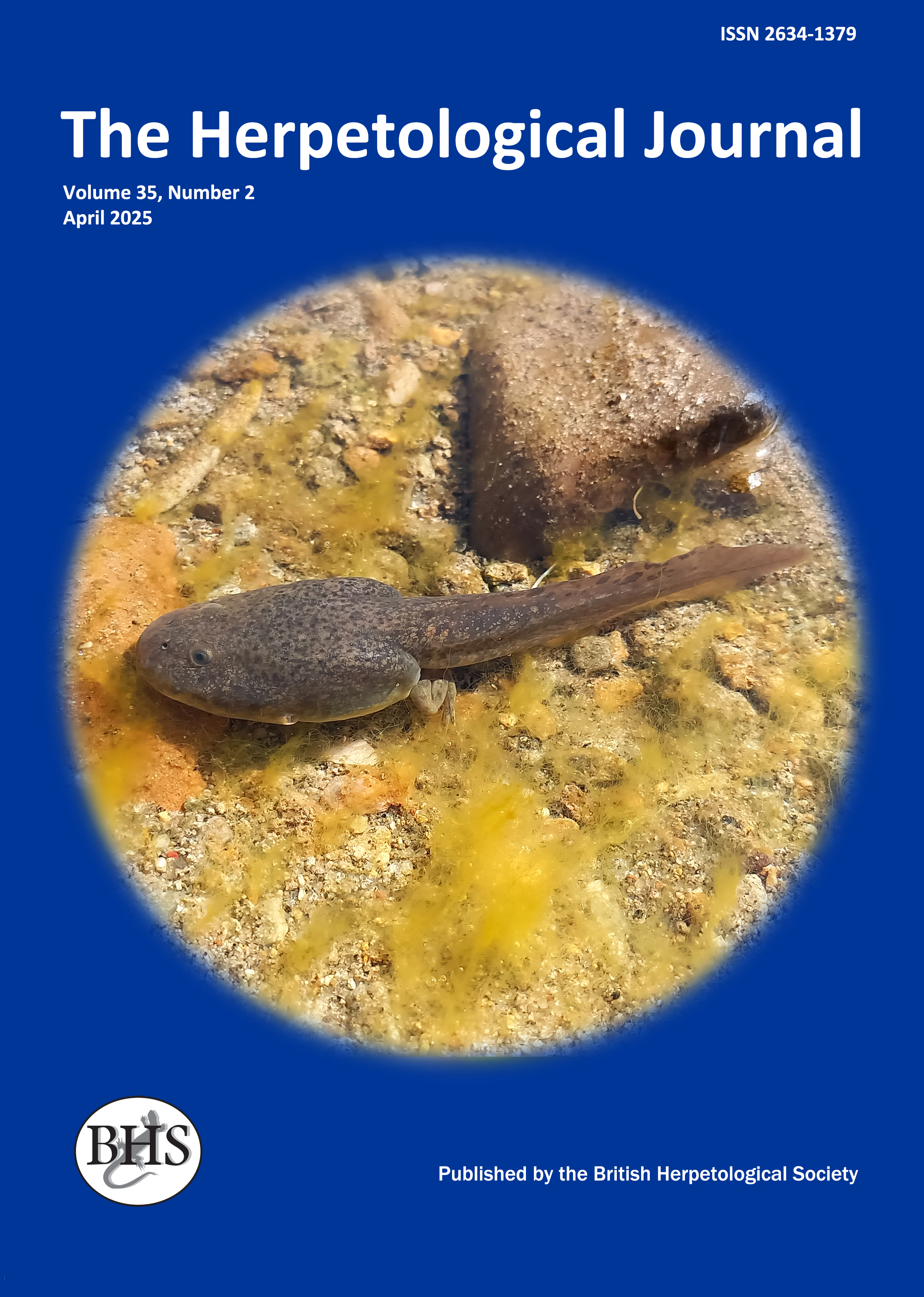
The Herpetological Journal
The Herpetological Journal is the Society's prestigious quarterly scientific journal. Articles are listed in Biological Abstracts, Current Awareness in Biological Sciences,Current Contents, Science Citation Index, and Zoological Record.
ISSN 0268-0130
2021 Impact Factor from Clarivate for the Herpetological Journal is 1.194, an increase of 0.332 from 2020.
pdf 03. The effects of two calcium supplementation regimens on growth and health traits of juvenile mountain chicken frogs (Leptodactylus fallax)
1519 downloads
Open Access
https://doi.org/10.33256/31.1.1826
pp. 18-26
Authors: Christopher J. Michaels, Cheska Servini, Amanda Ferguson, Amanda Guthrie, Stephanie Jayson, Jade Newton-Youens, Taina Strike & Benjamin Tapley
Abstract: The mountain chicken frog (Leptodactylus fallax) is among the 42 % of amphibians threatened with extinction and is dependent upon ex situ populations to recover in the wild. Amphibian captive husbandry is not fully understood and empirical data are required to optimise protocols for each species in captivity. Calcium metabolism and homeostasis are areas of importance in captive husbandry research and have been identified as a challenge in maintaining ex situ populations of L. fallax. We trialled two frequencies (twice and seven times weekly) of calcium supplementation via dusting of feeder insects in two groups of L. fallax juveniles and measured growth and health effects through morphometrics, radiography, ultrasonography and blood and faecal analysis over 167 days, followed by a further 230 days of monitoring on an intermediate diet informed by the initial dataset. We showed that supplementation treatment did not affect growth or health status as measured through blood analysis, radiography and ultrasonography. More frequent supplementation resulted in significantly more radiopaque endolymphatic sacs and broader skulls. Frogs fed more calcium excreted twice as much calcium in their faeces. The intermediate diet resulted in previously lower supplementation frogs approximating the higher supplementation frogs in morphometrics and calcium stores. Comparison with radiographic data from wild frogs showed that both treatments may still have had narrower skulls than wild animals, but mismatching age class may limit this comparison. Our data may be used to inform dietary supplementation of captive L. fallax as well as other amphibians.
Keywords: Amphibia, amphibian, anuran, diet, nutrition, zoo, calcium

